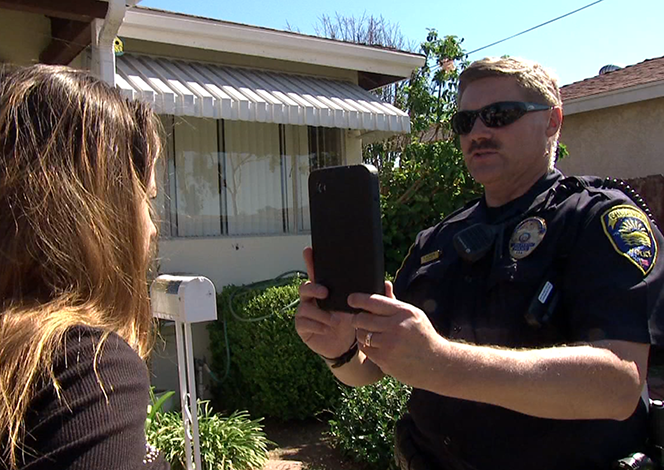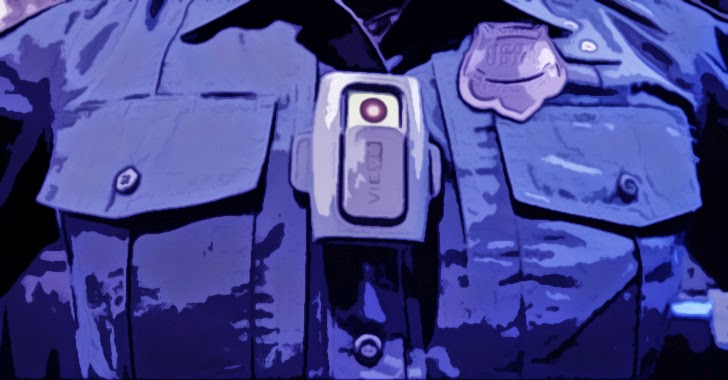Given the steady roll-out of biometrics in banking, personal computing, and travel as of late, it seemed to be just a matter of time before police were equipped the latest biometric ID technology.
Defense One reports that,
Device-maker Motorola will work with artificial intelligence software startup Neurala to build “real-time learning for a person of interest search” on products such as the Si500 body camera for police, the firm announced Monday.
Neurala, it turns out, received partial funding by DARPA under a program called SyNAPSE that dates back to 2008 as an effort to create next-gen artificial intelligence “to build robots whose intelligence matches that of mice and cats.”
Neurala’s “Brains for Bots” mission can be seen in the video below which emphasizes what DARPA is seeking: the ability to scan the environment and recognize people and objects. The video becomes more than a tad creepy, however, when a drone is eventually seen stalking following a young woman who is strangely referred to as an “object.”
This identification process has now apparently given birth to a system capable of a much deeper information dive which is being promoted (of course) as a way to find missing children.
In the case of a missing child, imagine if the parent showed the child’s photo to a nearby police officer on patrol. The officer’s body-worn camera sees the photo, the AI engine ‘learns’ what the child looks like and deploys an engine to the body-worn cameras of nearby officers, quickly creating a team searching for the child,” Motorola Solutions Chief Technology Officer Paul Steinberg said in a press release.
This latest announcement, however, is just one small piece of a much larger trend that has been incrementally tested for more than a decade … it started in Afghanistan.

war zone mobile scanner credit: Cross Match Technologies
The American public, unbeknownst to them, received this trickle-down gift from the military as early as 2007 according to the Electronic Frontier Foundation as cited by The Center for Investigative Reporting:
That’s when the federal government’s National Institute of Justice awarded a $418,000 information-led policing grant to the Automated Regional Justice Information System.
The program’s goal, according to the proposal, was to develop open-source software that “will be made available as part of a repeatable national model.” Over the next few years, the San Diego Association of Governments and county sheriff’s department worked together to vet potential vendors and develop the system.
The program eventually morphed into a pilot program in San Diego County that I reported on in 2013. As they say, a picture is worth a thousand words:

Officer Rob Halverson, with the Chula Vista Police Department in California, uses a Samsung Galaxy tablet to identify a woman as part of a pilot program in San Diego County testing facial recognition software. Credit: Roque Hernandez/Univision
It is important to keep this provenance in mind when we hear of purely altruistic motives like finding missing children coming from the military-police-intelligence complex.
In reality, despite more than a decade of technological development, there are still no legal parameters yet established for wide-scale use of this technology, nor transparency of the secret databases to which the technology is connected. Moreover, police body cameras themselves are not proving to be the panacea that many accountability advocates had hoped for, but are in many cases proving to be an enabling tool of further spying and abuse.
[READ: 5 Reasons Police Body Cameras Are a Terrible Idea and Don’t Fall for the Police Body Camera Deception]
Equipped with military-grade identification systems, future police might become even less distinguishable from their military suppliers. And, of course, let’s not forget about the robots and drones…
Nicholas West writes for ActivistPost.com. He also writes for Counter Markets agorist newsletter. Follow us at Twitter and Steemit.
This article may be freely republished in part or in full with author attribution and source link.
Image Credit: The Anti-Media


Departments can spend all the taxpayer money they want on these cameras. The main issue is that they can be turned off hence reporting nothing or have the tape(s) go missing – if the officer involved is in the wrong or trying to hide something incriminating toward him/her. On top of that, the courts are corrupt which comes in after the incident.
So after you are ‘identified’ as a non-criminal they turn off the camera and shoot you.
Damn,you beat me to it.
your avatar it better then my avatar
Thank you, and I thank photobucket. . . .
No way! Its not your kid? Mine is actually my hand holding a spider I found under the porch.
the other side of the coin… a camera that is already on, does not necessitate the application for a warrant. the fourth amendment hard at work, NOT – no judge need be involved
Why would you further enable the badged/uniformed psychopaths?
America – Where truth becomes treason in an empire of lies.
…which can be conveniently turned off prior to shooting, tasering, pepper-spraying or jack-booting a ‘suspect’ as demonstrated 3 days ago with the murder of an Australian woman in the U.S. in Minnesota!